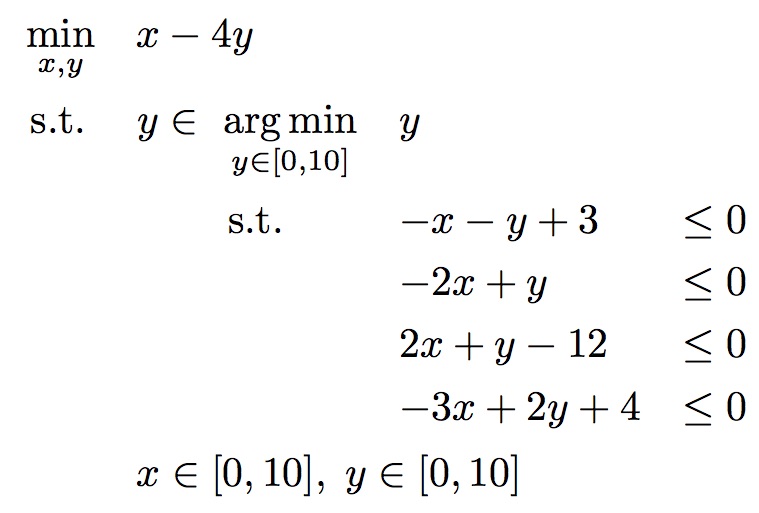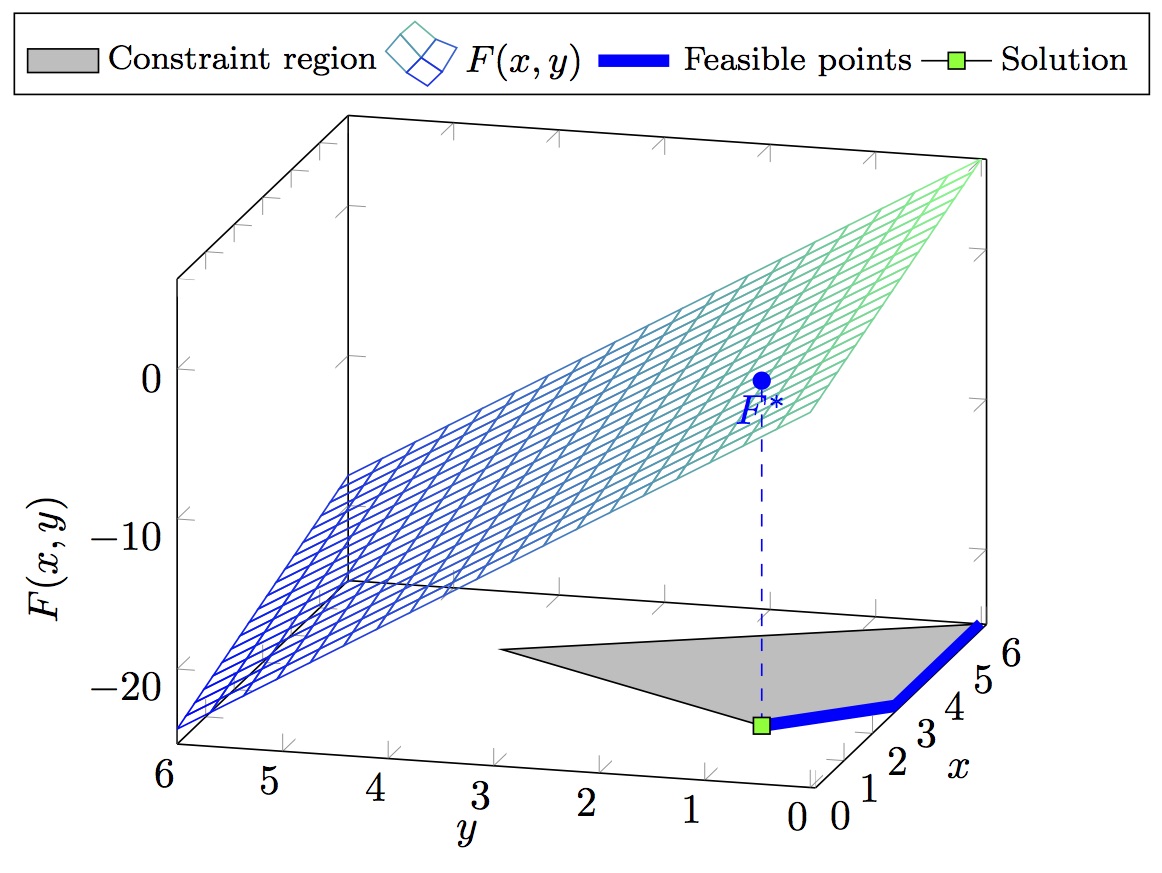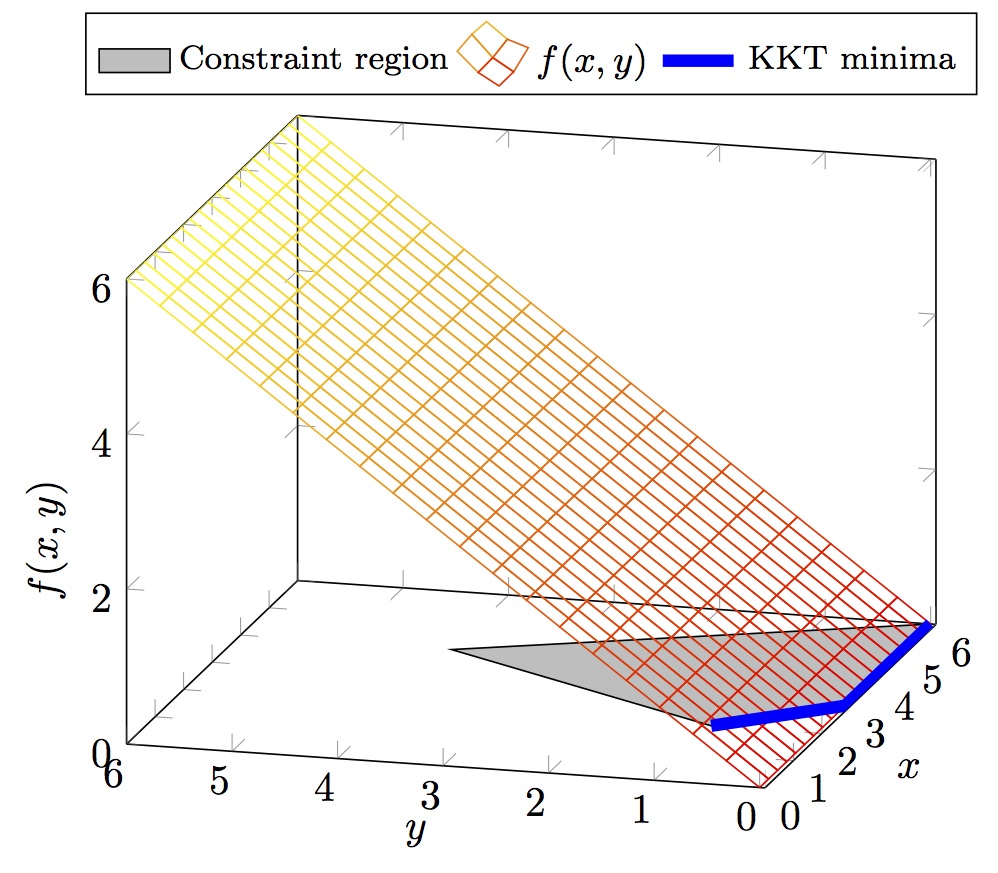sib_1997_02 : Linear-Linear problem from (Shimizu et al., 1997):

Comments on the problem
In all sources mentioned below, the reported optimal solution occurs at (x, y) = (4.0, 4.0) with F* = -12.0 and f* = 4.0. However, it is easy to check that this point is not bilevel feasible. When the leader (outer decision maker) selects x = 4.0, the follower (inner decision maker) will respond with y = 0.0. This is better for the follower, but not for the leader.
Moreover, graphical analysis in Figure 16.1.1 in (Shimizu et al., 1997) shows discrepancy between geometry (polyhedron depicting constrain region) and the problem formulation. Therefore, in sib_1997_02v we present a variation of this problem. The only difference is the fourth inner constraint, which is changed from -3x + 2y + 4 <= 0 into 3x - 2y - 4 <= 0. After this modification, the optimal solution occurs at (4.0, 4.0) with F* = -12.0 and f* = 4.0.
Optimal solution
| Objective values | Solution point |
|---|---|
| F* = -2.000 | x* = 2.000 |
| f* = 1.000 | y* = 1.000 |
Illustration of the problem
| Outer Problem | Inner Problem |
|---|---|
 |
 |
Sources where this problem occur
Original source:
- Example 16.1.1 in (Shimizu et al., 1997)
Other sources:
- Example 5.1.1 in (Bard, 1998)
- ShimIshiBard97 problem in (Colson, 2002)
Description of the problem in the AMPL format
var x >= 0, <= 10; # Outer variable
var y >= 0, <= 10; # Inner variable
var l{1..6} >= 0, <= 10; # KKT Multipliers
minimize outer_obj: x - 4*y; # Outer objective
subject to
# Inner objective:
inner_obj: y = 0;
# Inner constraints
inner_con1: -x - y + 3 <= 0;
inner_con2: -2*x + y <= 0;
inner_con3: 2*x + y - 12 <= 0;
inner_con4: -3*x + 2*y + 4 <= 0;
# KKT conditions:
stationarity: 1 - l[1] + l[2] + l[3] + 2*l[4] - l[5] + l[6] = 0;
complementarity_1: l[1]*(-x - y + 3) = 0;
complementarity_2: l[2]*(-2*x + y) = 0;
complementarity_3: l[3]*(2*x + y - 12) = 0;
complementarity_4: l[4]*(-3*x + 2*y + 4) = 0;
complementarity_5: l[5]*y = 0;
complementarity_6: l[6]*(y - 10) = 0;
References
- J. F. Bard, Practical Bilevel Optimization, vol. 30 of Nonconvex Optimization and Its Applications, Springer US, 1998
- B. Colson, BIPA(BIlevel Programming with Approximation Methods)(software guide and test problems), Cahiers du GERAD, (2002)
- K. Shimizu, Y. Ishizuka, and J. F. Bard, Nondifferentiable and Two-Level Mathematical Programming, vol. 102, Kluwer Academic Publishers, Boston, 1997